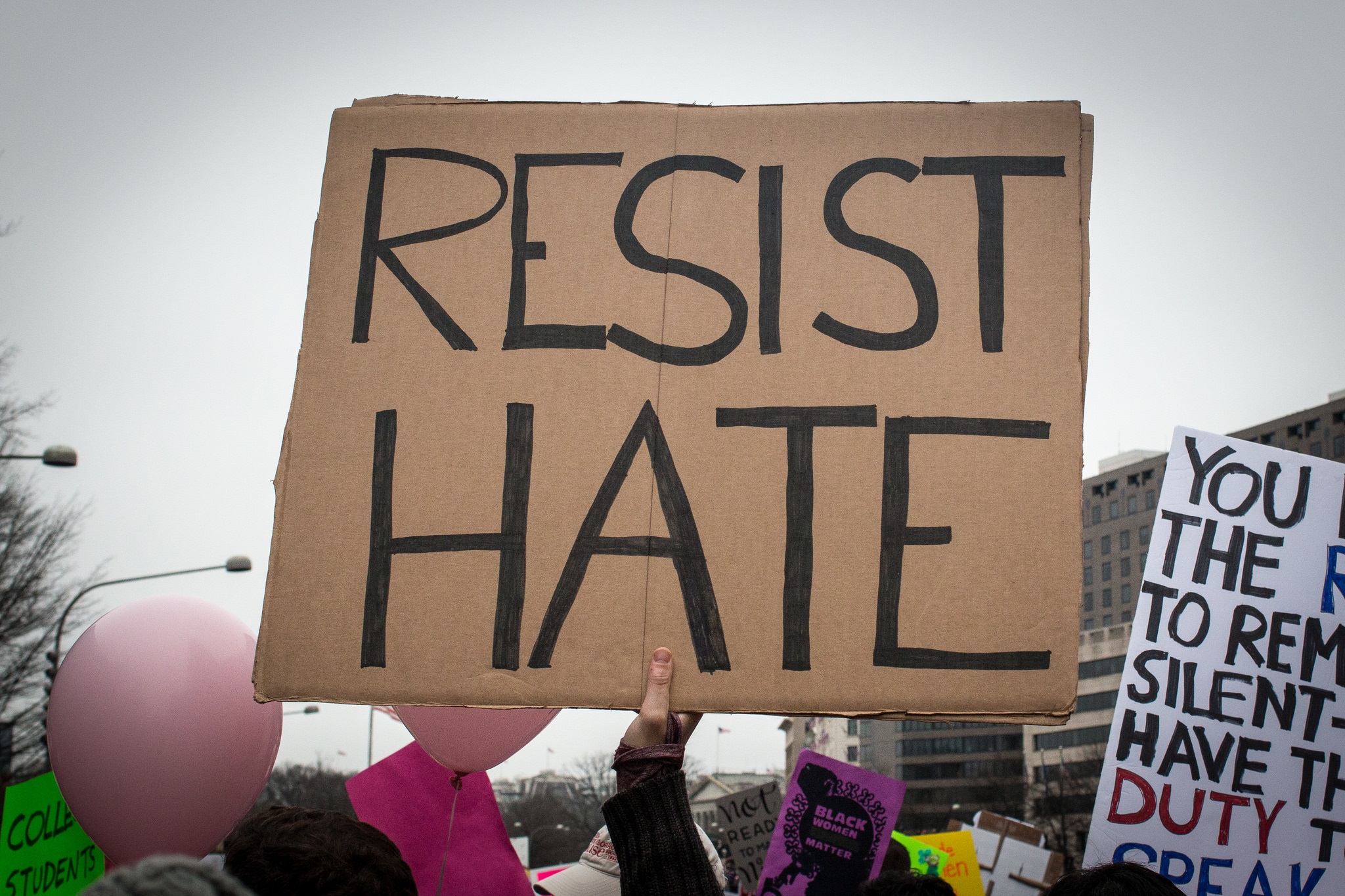
Resist Hate by Liz Lemon Liz Lemon / Liz Lemon via Flickr CC
It would be easy to become skeptical about the viability and efficacy of nonviolent resistance in the age of Trump. But this would be to ignore a number of incredibly hopeful trends.
The fact is that armed insurrection is becoming less and less common—and less and less effective. The fact is that more people around the world are turning to nonviolent resistance than at any time in recorded human history. We are witness to ongoing people power movements in Hungary, Turkey, Ecuador, Zimbabwe, Venezuela, and the United States. In the past year, people power has led to the peaceful impeachment of presidents in South Korea and Brazil. In the past two years, we’ve seen people power lead to the removal of corrupt governments in Haiti, Romania, and Guatemala. Whether we agree with their causes or not, ordinary civilians are increasingly turning to civil resistance—not armed struggle—as a way to pursue their demands.

The fact is that we are better equipped than in any time in recorded history to summon the wisdom and the tools of nonviolent resistance for the peaceful transformation of our society. At our fingertips, we have biographies and autobiographies, children’s books, novels, documentaries, films, how-to-guides, online courses, and in-person trainings. This reminds me of a conversation I once had with Rev. James Lawson, one of my mentors and personal heroes. He explained to me that when he was involved in the U.S. civil rights movement in the 1950s, the only available text from which to derive a strategy was Gandhi’s autobiography. Rev. Lawson said he was impressed with the wealth of materials and research now available to contemporary organizers and activists, since they had the benefit of learning from the documented histories of millions of people who have engaged in civil resistance over the past century.
Speaking of research, never before have academics and researchers been so committed to the systematic study of nonviolent resistance. At the last International Studies Association Annual Meeting, which was held in Baltimore in February, there were dozens of academic papers presented with the aim of better understanding how, why, and to what effect ordinary people can use civil resistance to effect change in their scenes. This is a significant departure from my first ISA in 2004, where research on the topics of terrorism, political violence, and counterinsurgency dominated the program. And since November, I have witnessed a truly inspiring upsurge in commitment and enthusiasm among my fellow academics and intellectuals to do work that matters in the real world and to engage with their communities with attitudes of humility and service.

It is no accident that the United States is experiencing an explosion in community groups and coalitions, who are coming together in an unprecedented level of civic engagement to resist abusive, indiscriminate, and hateful policies. People living in the United States are using nonviolent resistance at unprecedented rates. Some of the stories of the struggle are downright inspiring. On January 21st, over 4.1 million people actively participated in the Women’s March. This included people in every state in the U.S., about fifty women in a retirement community in Encinitas, California, and over four hundred women who were limited in their mobility and participated online. Since January 21st, people in the U.S. have participated in thousands of nonviolent protests, demonstrations, and strikes, which we’ve been tallying at the Crowd Counting Consortium. These include actions like a “kindness march” organized by children in Boulder, Colorado; the nationwide Day Without An Immigrant strikes; protests to support funding to Planned Parenthood; the nationwide Day Without a Woman strikes; and even a daily protest by a man who stands alone every day in Oak Creek, Michigan.

I’m sure this man protests every day because he knows very well that he is not alone. He stands with millions of people around the world who remain committed to creating a more empathetic, humane, and just humanity; who remain committed to addressing with courage and creativity the problems of economic, racial, gender, and ethnic inequality; who remain committed to halting the destruction of our planet; who understand that to be progressive means that, in fact, we can and must progress.
In spite of what seems to be happening within the halls of power, we live in a time where civil society is rising up to reclaim the power to determine a more compassionate, fair, and sustainable future. History shows us that these are the forces that set the course for true change in the world. Now is not the time to despair. It is the time to organize and prepare.